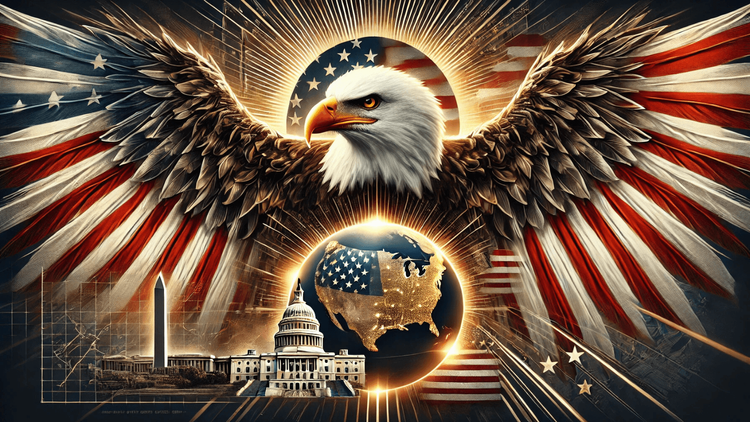Trump’s 25% and 10% Tariff Proposals: A Looming Trade War?
Trump’s sweeping tariff proposals target Canada, Mexico, and China, shaking global trade stability.

President-elect Donald Trump has once again stirred global markets with his ambitious and controversial tariff plans targeting Canada, Mexico, and China. These proposals aim to address issues ranging from drug trafficking to economic disparities, but they carry the potential to disrupt decades of established trade relationships. Trump’s announcement underscores his commitment to his “America First” agenda while raising concerns about the future of global commerce.
A Direct Challenge to Trade Norms
Trump’s proposed tariffs mark a significant departure from conventional trade practices. He pledged a 25% tariff on imports from Canada and Mexico, citing the need to combat cross-border drug trafficking and illegal immigration. This move could strain the U.S.-Mexico-Canada Agreement (USMCA), a landmark trade deal that Trump himself spearheaded in 2020. By targeting two of America’s largest trading partners, the president-elect risks unraveling a carefully balanced framework that ensures duty-free trade across North America.
For Canada and Mexico, the economic stakes are immense. In 2023, over 83% of Mexican exports and 75% of Canadian exports flowed to the U.S., underscoring their deep reliance on American markets. Industries ranging from automotive manufacturing to agriculture are bracing for potential disruptions. Critics argue that these tariffs would violate USMCA provisions, potentially leading to lengthy legal battles or forced renegotiations.
The situation becomes even more complex with China. Trump announced an additional 10% tariff on all Chinese imports, citing the country’s perceived failure to curb the flow of illicit drugs into the United States. This measure builds on Trump’s earlier trade policies, which imposed tariffs exceeding 60% on certain Chinese goods during his first term. While the administration frames these tariffs as necessary to protect American interests, they risk exacerbating tensions with a key economic rival.
Economic Fallout and Market Reactions
The economic consequences of Trump’s proposed tariffs could ripple across industries and borders. In the United States, tariffs act as a tax on imported goods, driving up costs for businesses and consumers alike. Economists warn that these measures could fuel inflation, particularly in sectors heavily reliant on imported materials. Historical precedents, including Trump’s earlier tariff rounds, suggest that higher costs for raw materials and finished goods could stifle economic growth.
The global response to Trump’s announcement has been swift. The U.S. dollar surged against the Canadian dollar and Mexican peso, reflecting investor uncertainty about the future of North American trade. Stock markets in Asia and Europe also saw declines as businesses prepared for potential disruptions in supply chains. These market reactions highlight the interconnected nature of modern economies and the risks associated with unilateral trade measures.
For China, the stakes are especially high. The world’s second-largest economy is already grappling with a prolonged property downturn, rising debt levels, and weak domestic demand. Additional tariffs could further strain its economic stability while prompting retaliatory measures against U.S. exports. Chinese officials have condemned Trump’s proposals, emphasizing the mutual benefits of economic cooperation and warning against the dangers of a trade war.
Diplomatic and Political Implications
Trump’s tariff strategy has sparked intense debate among policymakers and trade experts. Domestically, the proposals align with his broader push for economic nationalism and border security. However, they have drawn criticism from both sides of the aisle. Republicans warn of the inflationary impact on American households, while Democrats decry the measures as reckless and detrimental to international relations.
The proposed tariffs also put Canada, Mexico, and China in challenging diplomatic positions. Canadian Prime Minister Justin Trudeau has engaged in direct talks with Trump, emphasizing the importance of cooperation and stability. While Canada seeks a diplomatic resolution, it has not ruled out retaliatory measures if negotiations fail.
Mexico, meanwhile, has called for bilateral discussions to address shared concerns such as drug trafficking and border security. Mexican officials warn that escalating tensions could harm both economies, underscoring the need for constructive dialogue. Similarly, China has emphasized its willingness to collaborate on anti-drug initiatives while rejecting Trump’s accusations and pledging to protect its economic interests.
A Turning Point for Global Trade
Trump’s tariff plans represent more than a short-term policy shift; they could signal a turning point for global trade. By challenging established agreements and imposing unilateral measures, the president-elect risks undermining decades of economic integration. Analysts warn that these actions could trigger a realignment of supply chains as businesses seek to mitigate risks associated with political uncertainty.
The long-term implications are profound. North America’s tightly interconnected economies may face significant disruption if the USMCA framework collapses. Meanwhile, China’s role as a global manufacturing hub could diminish as companies diversify their supply chains to reduce dependence on a single market. These shifts may accelerate the trend toward regional trade blocs, reshaping the landscape of international commerce.
At the heart of this debate is a fundamental question: Can tariffs achieve the intended economic and security objectives without causing undue harm? Proponents argue that these measures are necessary to address systemic imbalances and protect American interests. Critics, however, contend that they risk provoking retaliatory actions, stoking inflation, and undermining global stability.
Conclusion
Donald Trump’s sweeping tariff proposals underscore his determination to reshape U.S. trade policy, but they come with significant risks. While aimed at addressing critical issues like drug trafficking and economic fairness, these measures threaten to disrupt established trade relationships and trigger widespread economic fallout. As the global community braces for potential upheaval, the need for diplomacy and pragmatic solutions has never been greater. Whether these tariffs achieve their intended goals or spark a new era of trade wars remains to be seen.






